How to fashionably secure your shoes in the 18th century
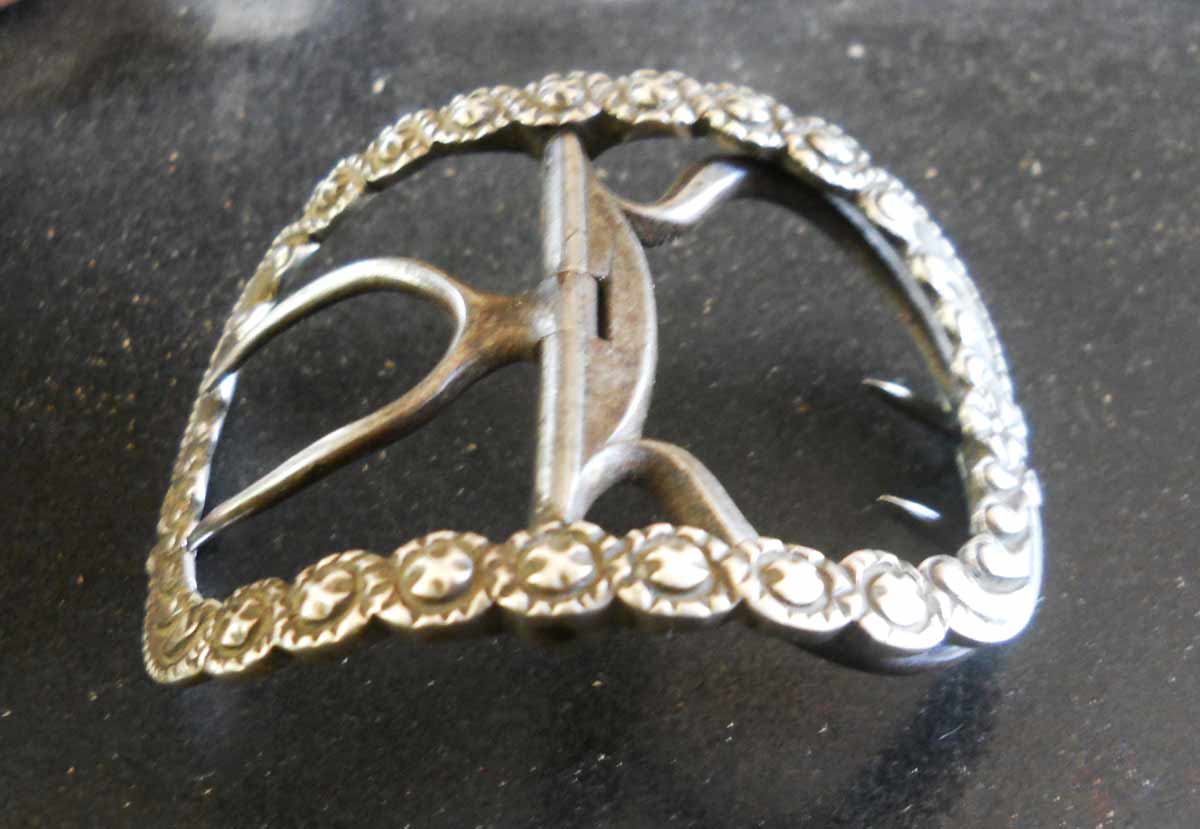
“This day I began to put on buckles to my shoes.” —Samuel Pepys, 22 January 1660
One of the questions most frequently asked of us in the shoemaker’s shop is how our shoes are held closed. They have no laces and, of course, Velcro is out of the question. All that can be seen are two straps crossing over the top of the shoe, and therein is part of the answer. These are known as ‘buckle straps.’
Attaching the buckles was the responsibility of the customer and in the period it was easily done. As we are often asked to assist in the attachment of buckles by visitors who have purchased a pair of costume shoes from one of our retail shops, we thought we would demonstrate the process for you here using an original silver shoe buckle with London hallmarks from the 1760s.
But first, a brief history of shoe buckles.
Shoe buckles came into fashion for men in the middle of the 17th century. Samuel Pepys, quoted above, gives us one of the earliest written records of the practice. They were used almost exclusively until 1790 when the French Revolution brought about a shift towards less ostentation in daily dress. However, shoes were not sold with buckles already attached, they had to be purchased separately.
During the 18th century, buckle making was a large trade in England, according to Chambers’ Encyclopædia: A Dictionary of Universal Knowledge, Volume II:
“In the latter half of the 18th century the manufacture of buckles was carried on most extensively in Birmingham, there being at one time not less than 4000 people directly employed in that town and its vicinity, who turned out 2,500,000 pairs of buckles annually, the prices ranged from one shilling to five guineas, and even ten guineas a pair.”
These buckles were made from a variety of metals; silver, brass, iron, steel, copper, and pewter were common choices, and could be plain or very flashy incorporating real or paste gemstones, commemorative motifs, or pleasing designs. One could easily change the look of an average shoe by giving it a good blacking and putting an eye-catching buckle on it.

Most buckles available for purchase in Williamsburg would have been imported from England. However, there does appear to have been some local production. John Greenhow advertised in the April 11, 1766 edition of the Virginia Gazette that he had “chapes and tongs for silver buckles” available for sale. Perhaps local silversmiths, like Greenhow’s neighbor James Geddy, purchased these to fit to buckle rims of their own make.
Regardless of where they were made, shoe buckles would not have been hard to come by in Williamsburg. It is likely that most people of average means owned several pairs of shoe buckles at any given time. The buckles would have been interchangeable and could be swapped out depending on what kind of work, or level of dress, a person required on a given day. Since they would have been more durable than the shoes, and had intrinsic value, a person would likely retain their buckles for some time only replacing them when fashion dictated a new style, or they finally wore out.
While buckles were the dominant form of closure; ties or laces never entirely went away. Young children’s shoes were frequently made to be tied closed and individuals on the lower end of society often resorted to adding ties when buckles were not available/obtainable or if the buckle straps of their shoes wore out. We find evidence for this both archeologically and in artwork from the period.
If you plan on fitting buckles to your own 18th-century style shoes, we recommend having someone assist you with this process to ensure a good fit. Make sure your heel is well set to the back of the shoe. Be sure to draw the buckle straps in firmly and tightly around the foot before marking them for buckle placement.
This method of buckle attachment is evident on surviving archeological shoes from the period. The author has worn shoes with buckles attached in this manner daily, and in many different situations, for six years and has yet to have a buckle fall off.
Good luck!
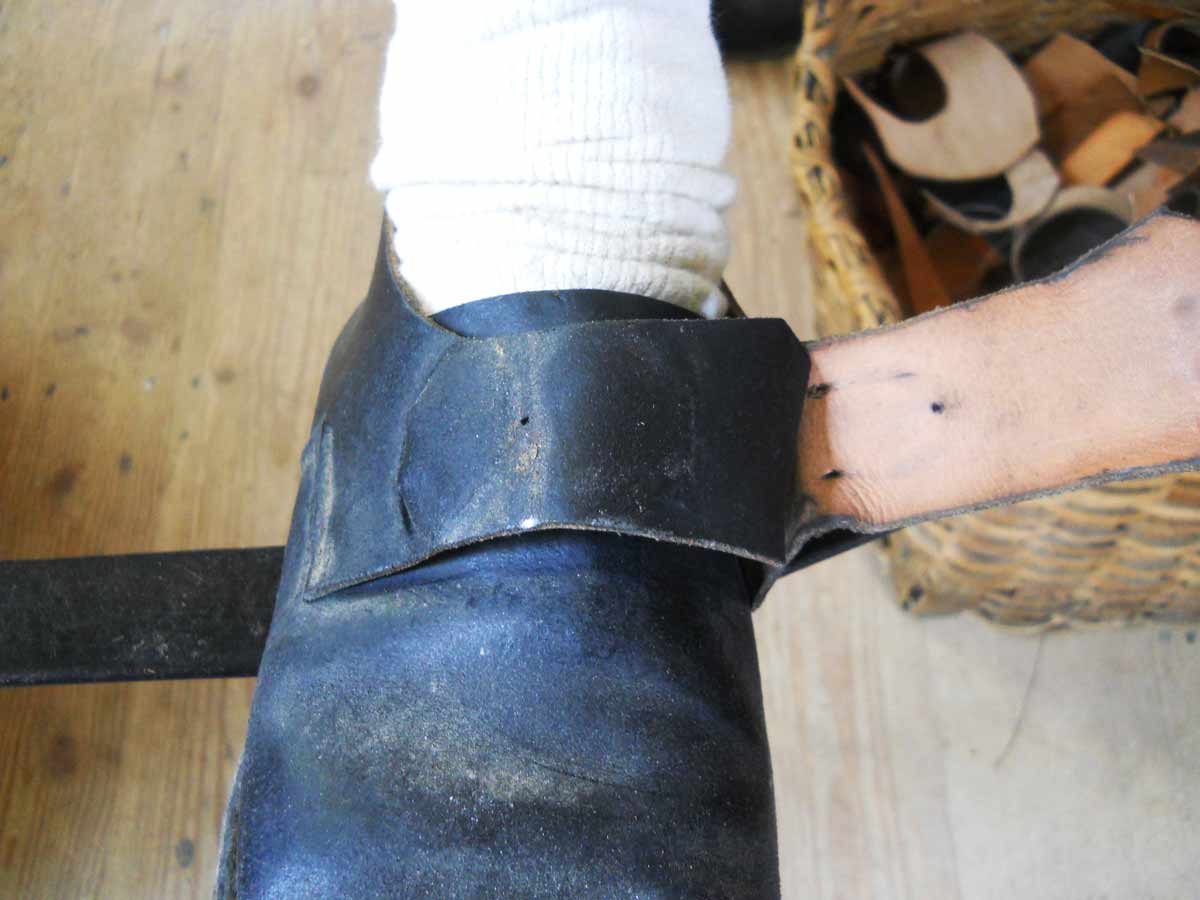
When a buckle is first set on a new shoe you are determining whether the shoe, which was made straight, will be a left or a right. The excess leather from the under strap (which points towards the opposite foot) will be trimmed away to reduce bulk and prevent any discomfort. We will be demonstrating attaching a buckle to the right shoe of a pair.
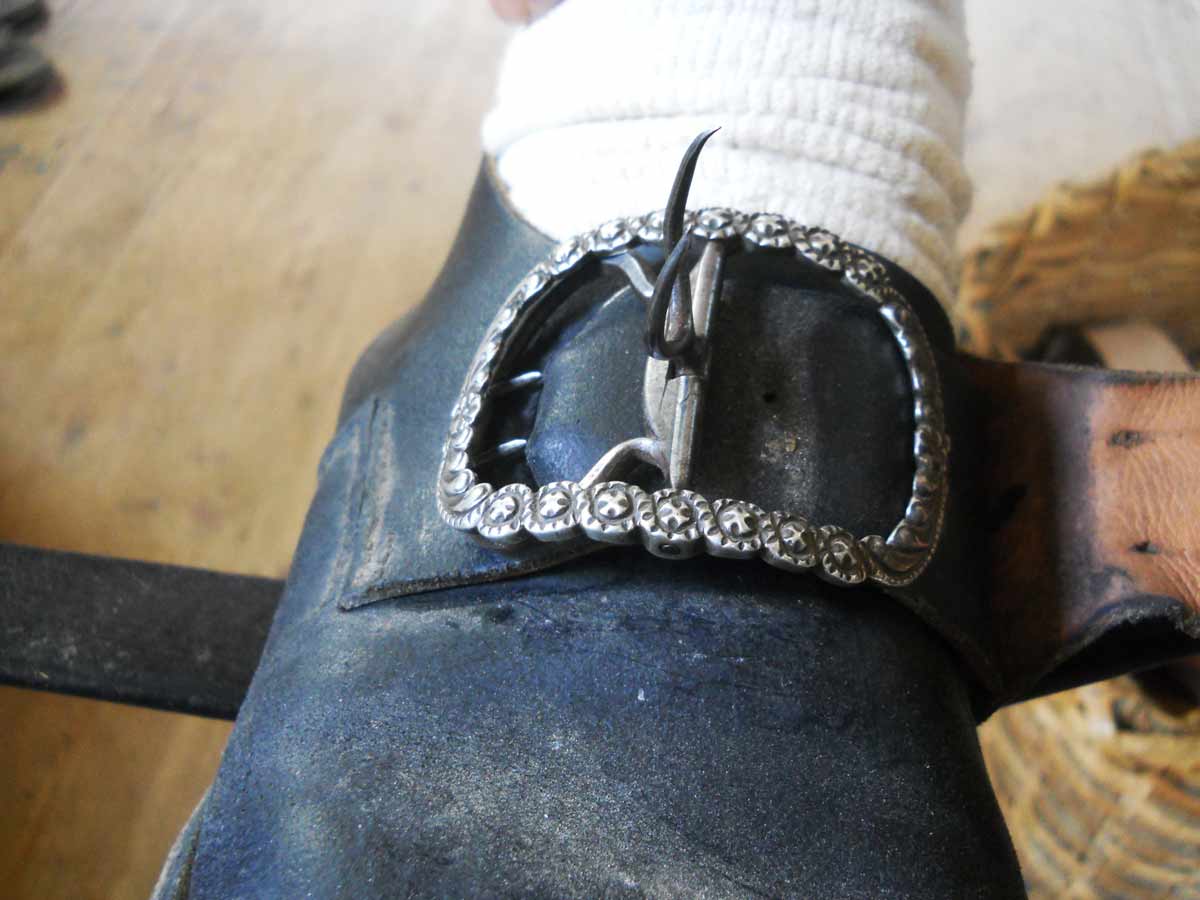
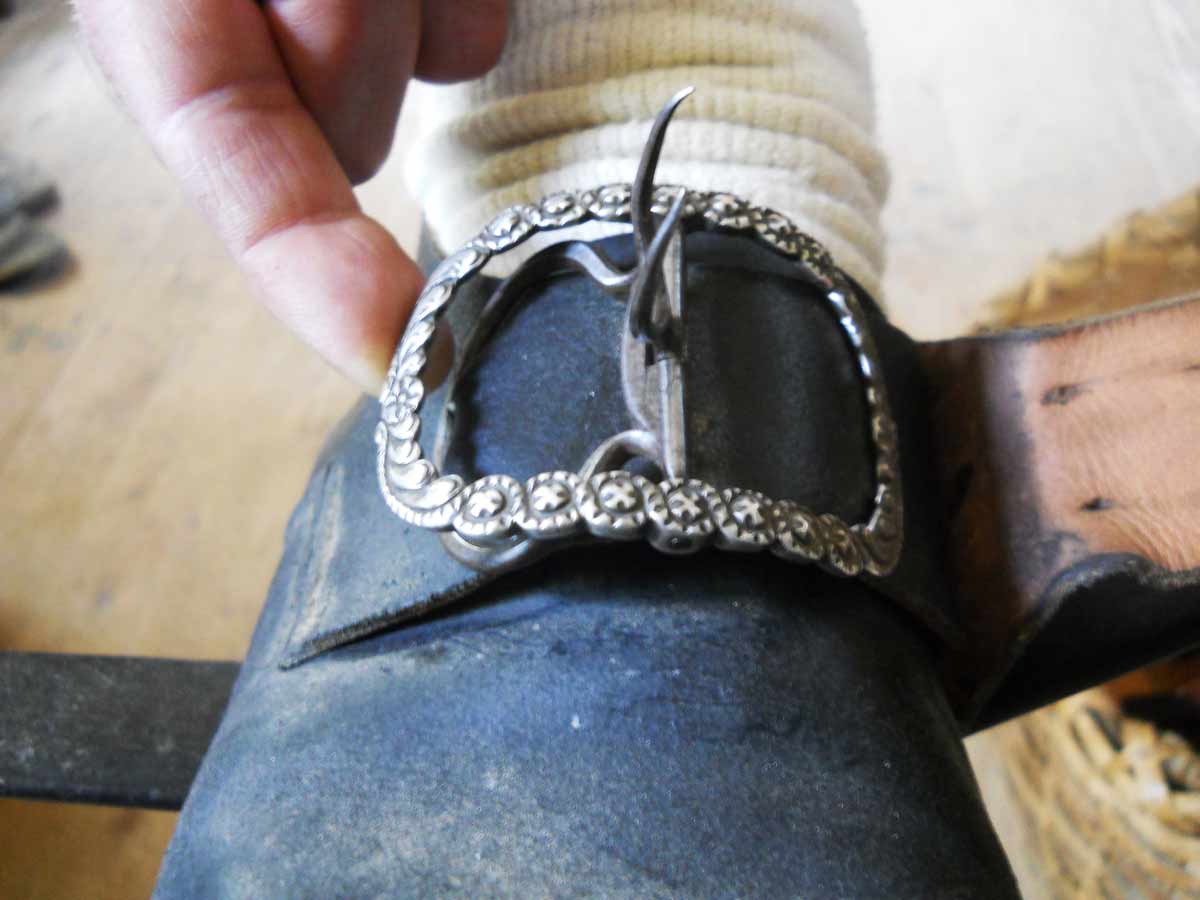
If you are a living historian/reenactor/costumer, the reproduction buckles available today will not have tines sharp enough to pierce the leather and you will need to use an awl of some sort to open the holes.
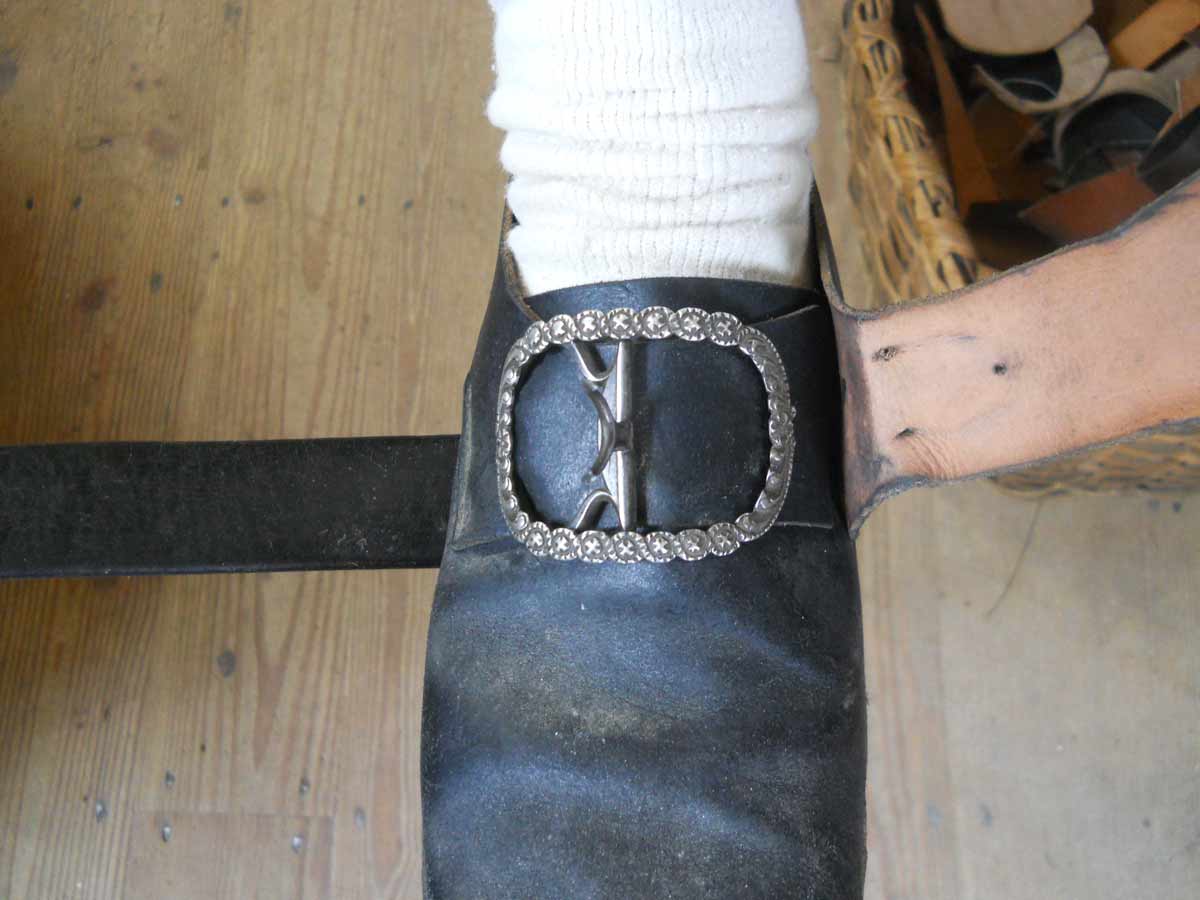
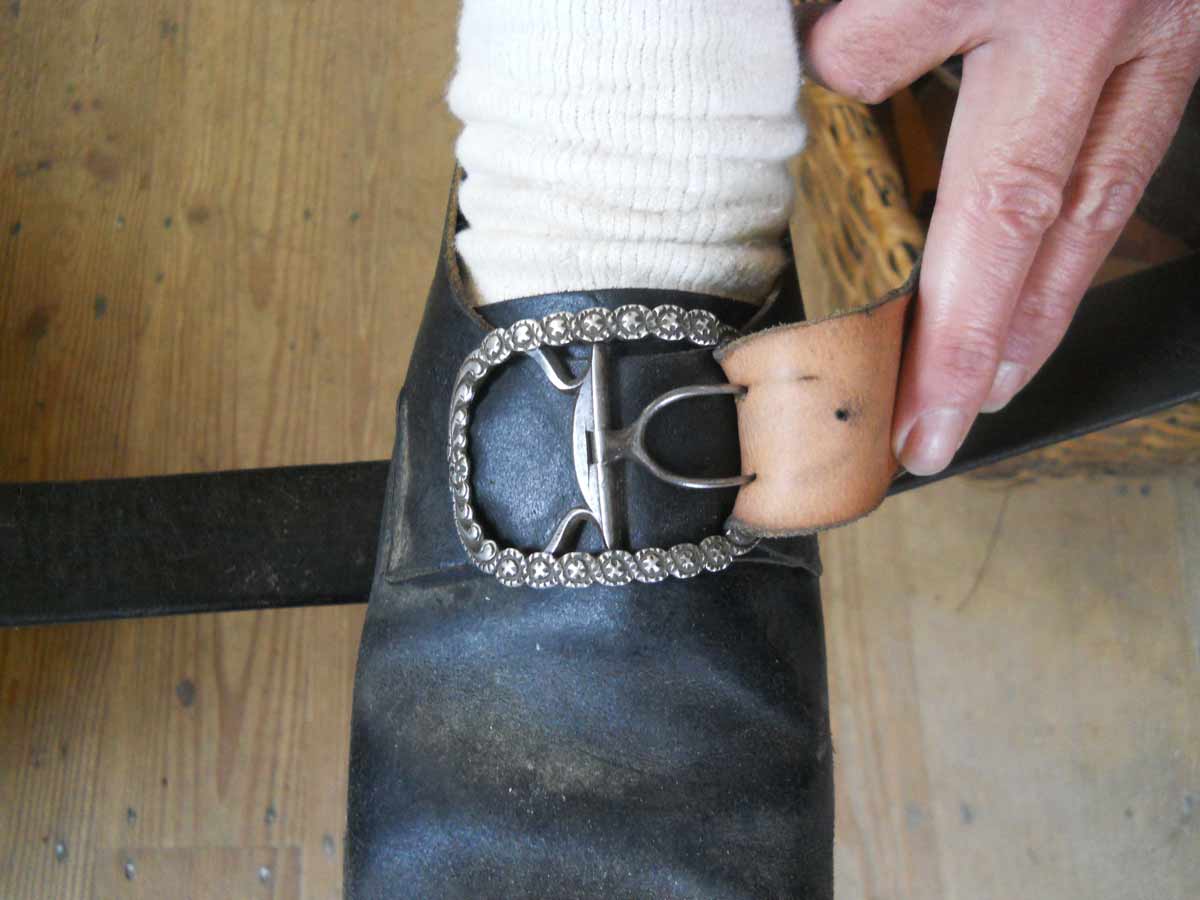
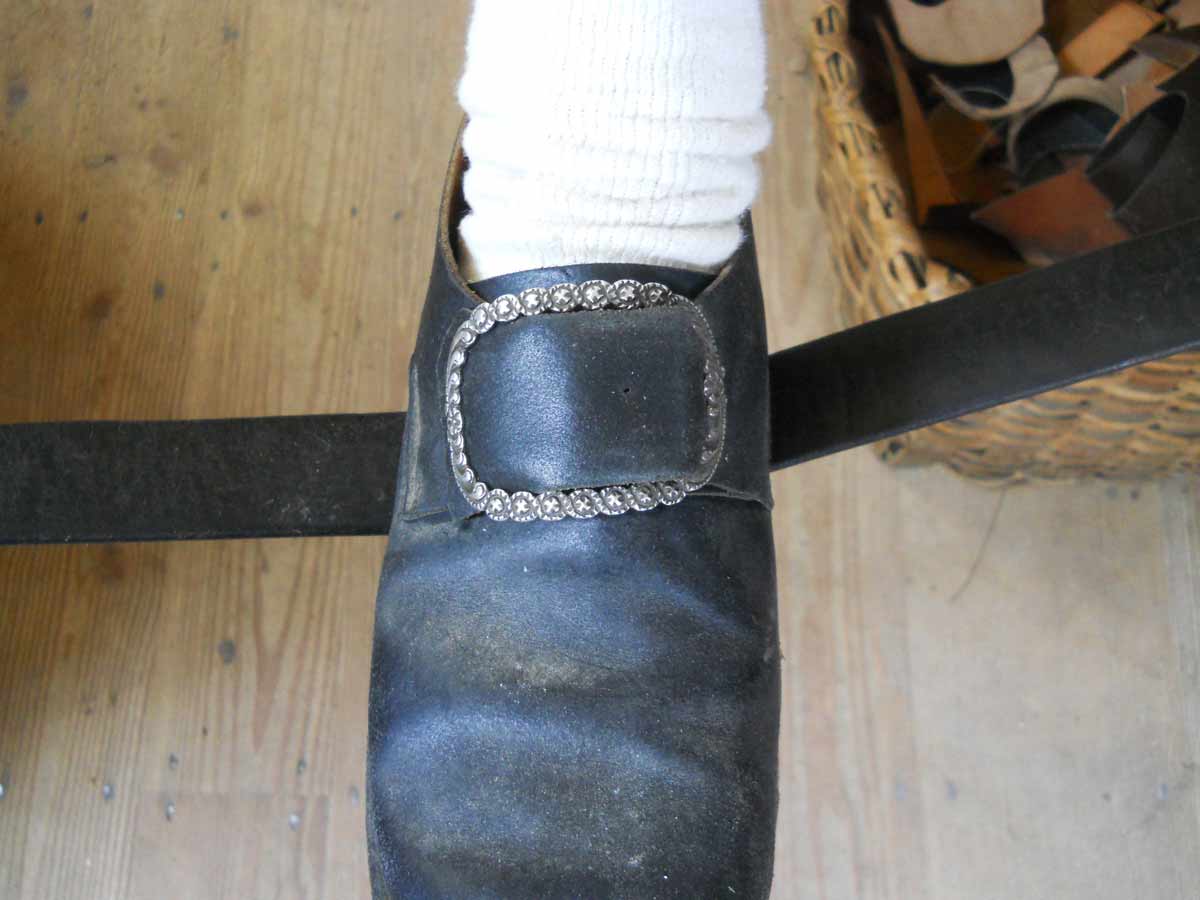
John Welch, Apprentice Shoemaker, holds an MA in History from the University of New Hampshire, and has more than ten years experience working in the museum field in both the United States and Canada. When not making shoes and studying history; he enjoys cooking, hiking, and traveling with his wife Annie.
Resources
Robert Latham and William Matthews eds., The Diary of Samuel Pepys, Volume I, 1660 (Berkeley: University of California Press, 1970), 26.
William and Robert Chambers, Chambers’ Encyclopædia: A Dictionary of Universal Knowledge, New Edition, Volume II, Beaugency to Cataract (Philadelphia: J. B. Lippincott Company, 1888), 513.
John Greenhow, “Advertisement,” Virginia Gazette (Purdie and Dixon publishers), April 11, 1766, 4.